Parkinson’s disease patients at Hoag show their artistic side
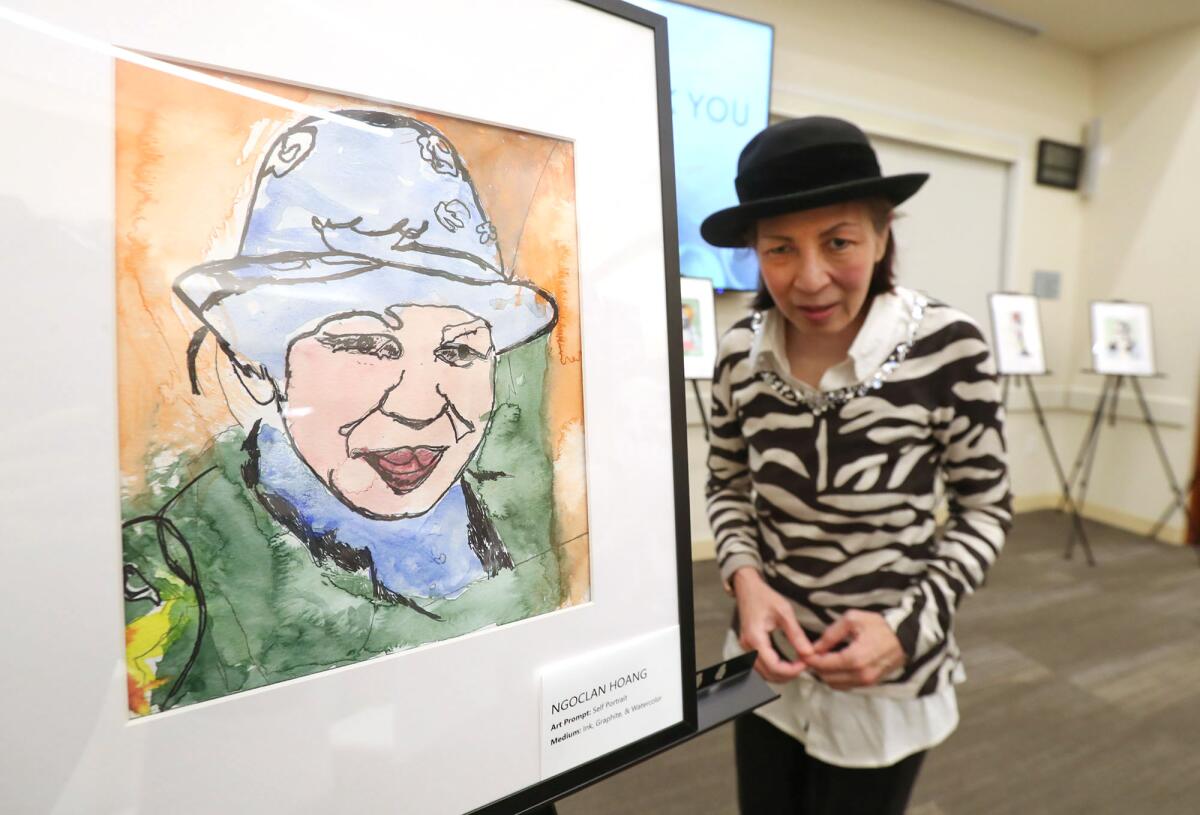
- Share via
Living with intention is a big thing for those who suffer from Parkinson’s disease.
As automatic movements become more impaired, intentional movements become more critical.
For the record:
11:12 a.m. Feb. 3, 2024This article has been updated with the correct first name of Jessica Hoang.
A group of several Parkinson’s patients at Hoag’s Pickup Family Neurosciences Institute have been attending the “Painting With Parkinson’s” program since it launched last July.
The patients got to celebrate some of the fruits of their labor on Wednesday, as Hoag held a gallery night on campus in Newport Beach to showcase some of their artwork.
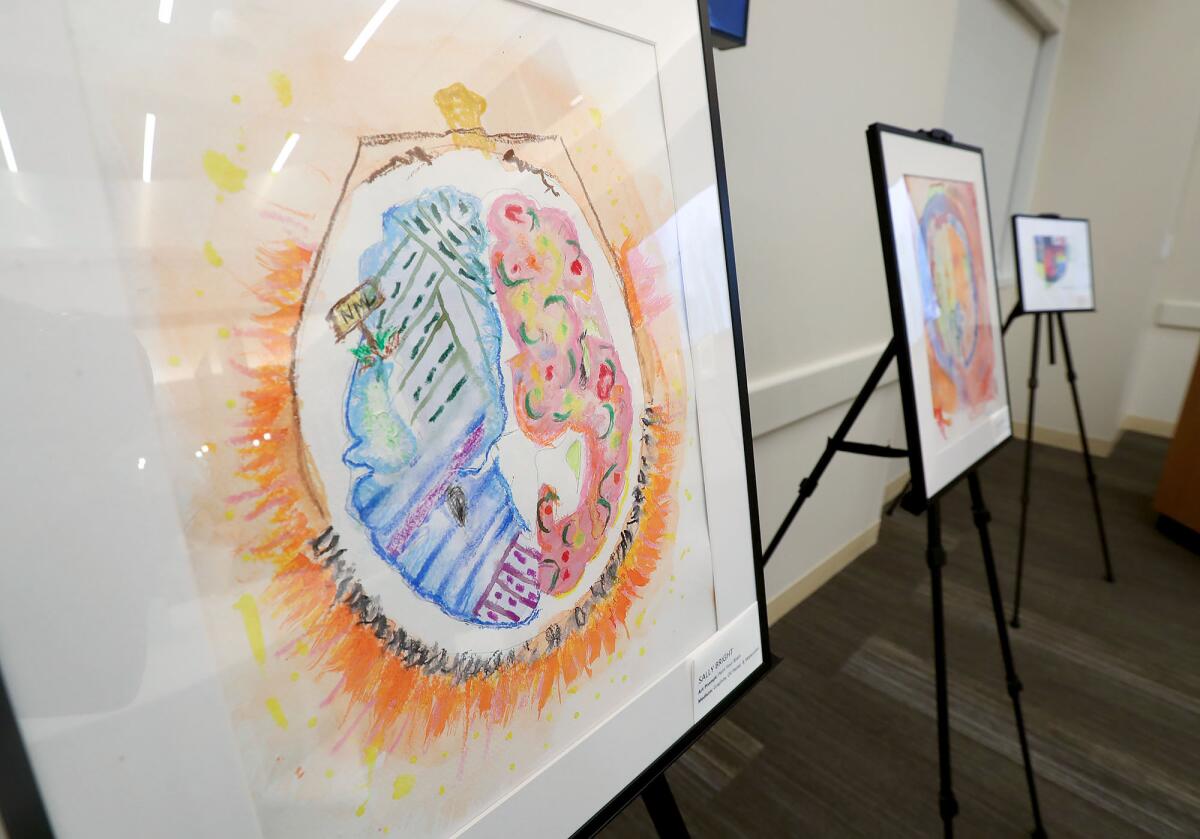
“They surprise me every time,” said Joey Nesler, a medical clinical social worker for the institute who’s the group instructor. “I think that they’re amazing. They’re fearless. Not all of them have artistic training, but they just jump in. I ask them what they want to do often, and one of the responses was, ‘We want to do self-portraits.’ That’s one of the hardest things to do.”
Nesler leads the 60- to 90-minute class at the Melinda Hoag Smith Center for Healthy Living once a month. The course is based on the work of Nancy Tingey, an Australian who founded a Parkinson’s painting program in 1994 to support her husband who had the neurodegenerative disorder.
Nesler said she was approached by Belinda Stewart-Burger, the nursing navigator for movement disorders at Hoag, about starting a similar program.
“I really wasn’t sure how that was going to work, but I do know about the healing power of making art,” Nesler said. “Based on the Australian curriculum we keep it small, because Parkinson’s patients do not do well in a crowded or chaotic environment. Keeping it a small group of calm vibes is really the key to it.”
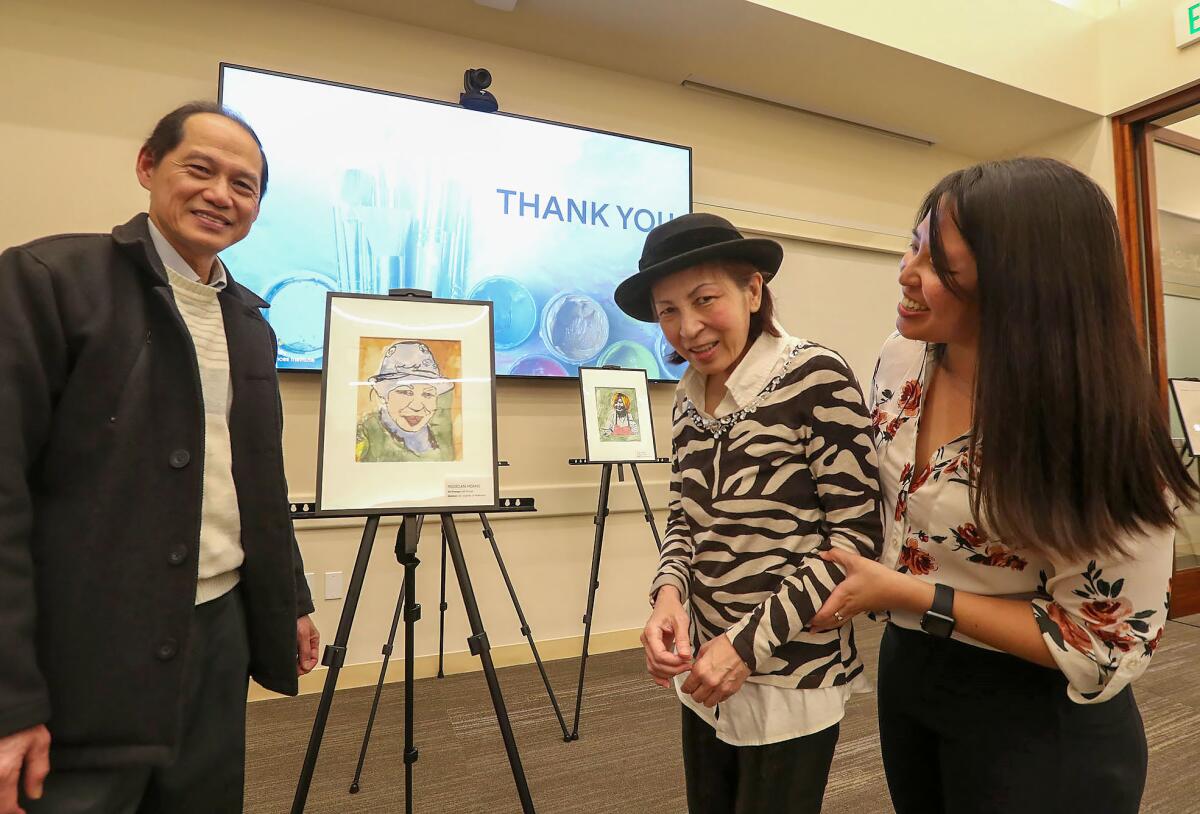
Parkinson’s symptoms have been found to improve with art, according to the Parkinson’s Foundation. Creative activity can reduce tremors, and making art is a powerful non-verbal activity for those with impaired speech. Meanwhile, the social aspect helps those who may battle with isolation or depression.
It’s made a difference for Ngoclan Hoang of Orange, 63, who is taken to the class by her daughter, Jessica.
Jessica Hoang said her mother has dealt with Parkinson’s for about 15 years. It’s fairly debilitating for her, with a lot of pain and stiffness. She used to love to do sewing and embroidery, as well as painting, but it just got too painful for her hands.
The “Painting With Parkinson’s” class has allowed Ngoclan to rediscover her passion. She’s working with watercolors for the first time and really enjoying it.
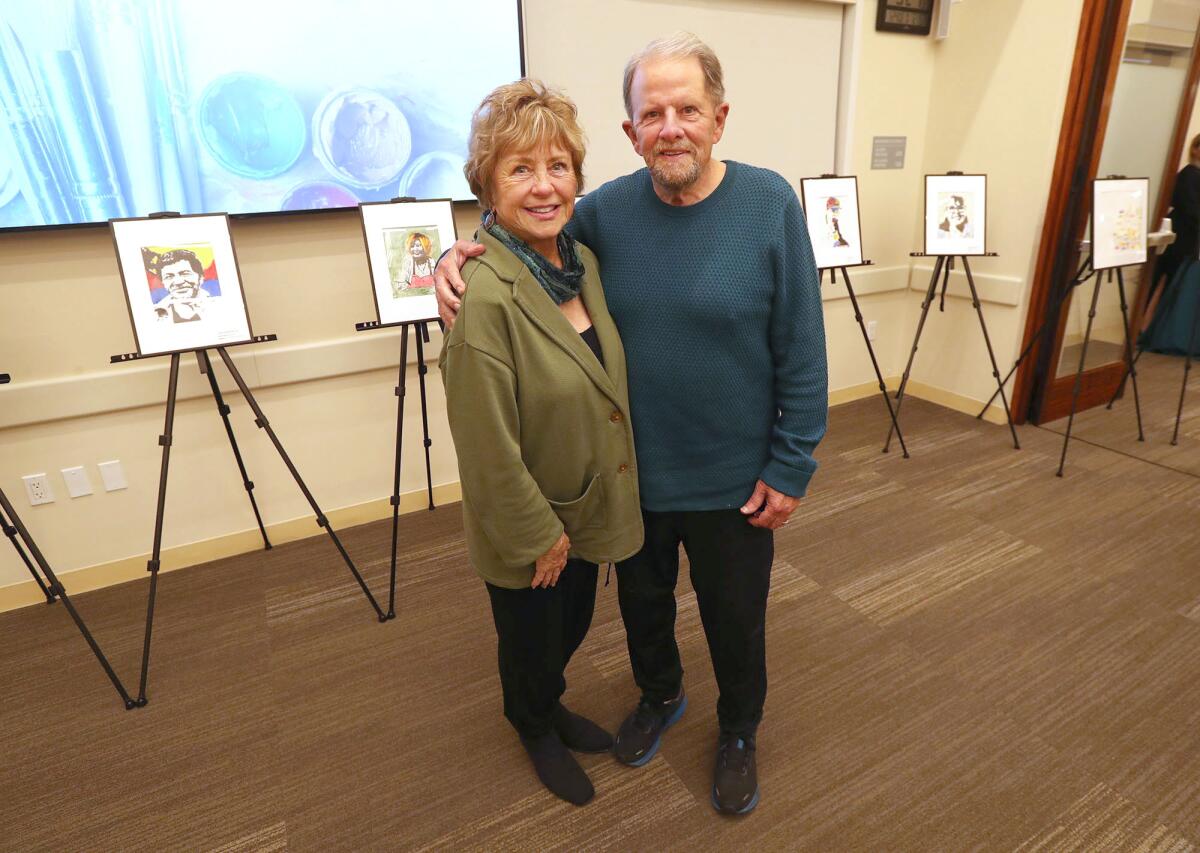
“When she’s painting, she really doesn’t have so many of the symptoms that she struggles with all day,” Jessica Hoang said. “She’s able to just zone in and flow … it’s been amazing to see her rediscover that she has that ability. It’s brought her so much joy. She’s so proud that she can still make beautiful things.”
Paintings at Wednesday’s gallery night event included watercolor and oil-based creations, and were typically made based on prompts like “paint your brain” or “paint an ocean reef.” Patients come up with a new painting at each session.
“They’re just trying to forget about Parkinson’s and get back to life,” said Dr. Saulena Shafer, a neurologist who’s the director of the Salsbury Family Movement Disorders Program. “That’s kind of where the art program comes in, and we’re doing some other exercise programs. Instead of allowing the Parkinson’s to rule their lives, they’re trying to forget that they have Parkinson’s.”
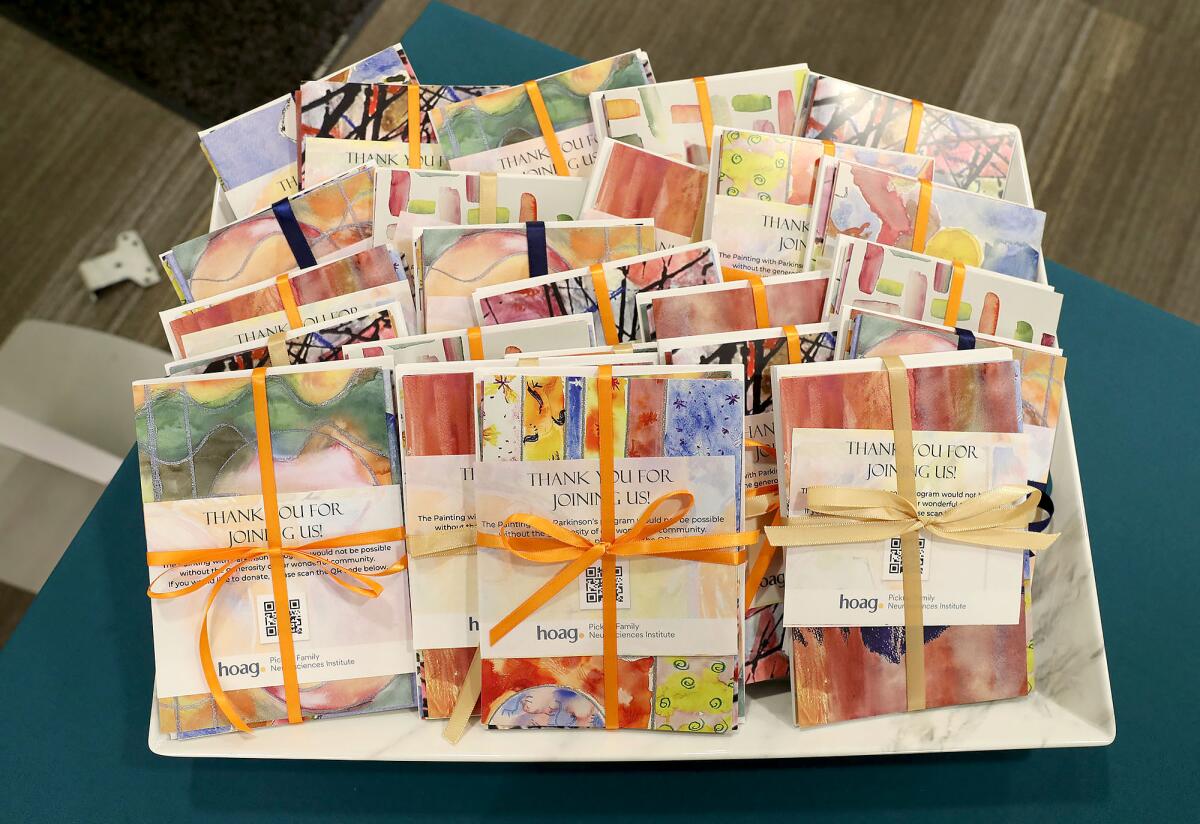
Glenn and Marilyn Salsbury, who live on Balboa Island, also enjoyed the event. They are the namesakes of the Salsbury Family Movement Disorders Program, after making a $500,000 gift to Hoag in 2021.
Glenn Salsbury, who turns 80 this year, has been dealing with Parkinson’s for the last four years and is a patient there. He hasn’t joined the art class but is well aware of its benefits.
“My daughter, Alison, paints all the time,” he said. “She says, ‘I get out of my worries and just let it go.’”
That’s the idea for the Parkinson’s patients, too. There’s now a waiting list for “Painting With Parkinson’s,” and Nesler said she’s hopeful that a second class might be added soon.
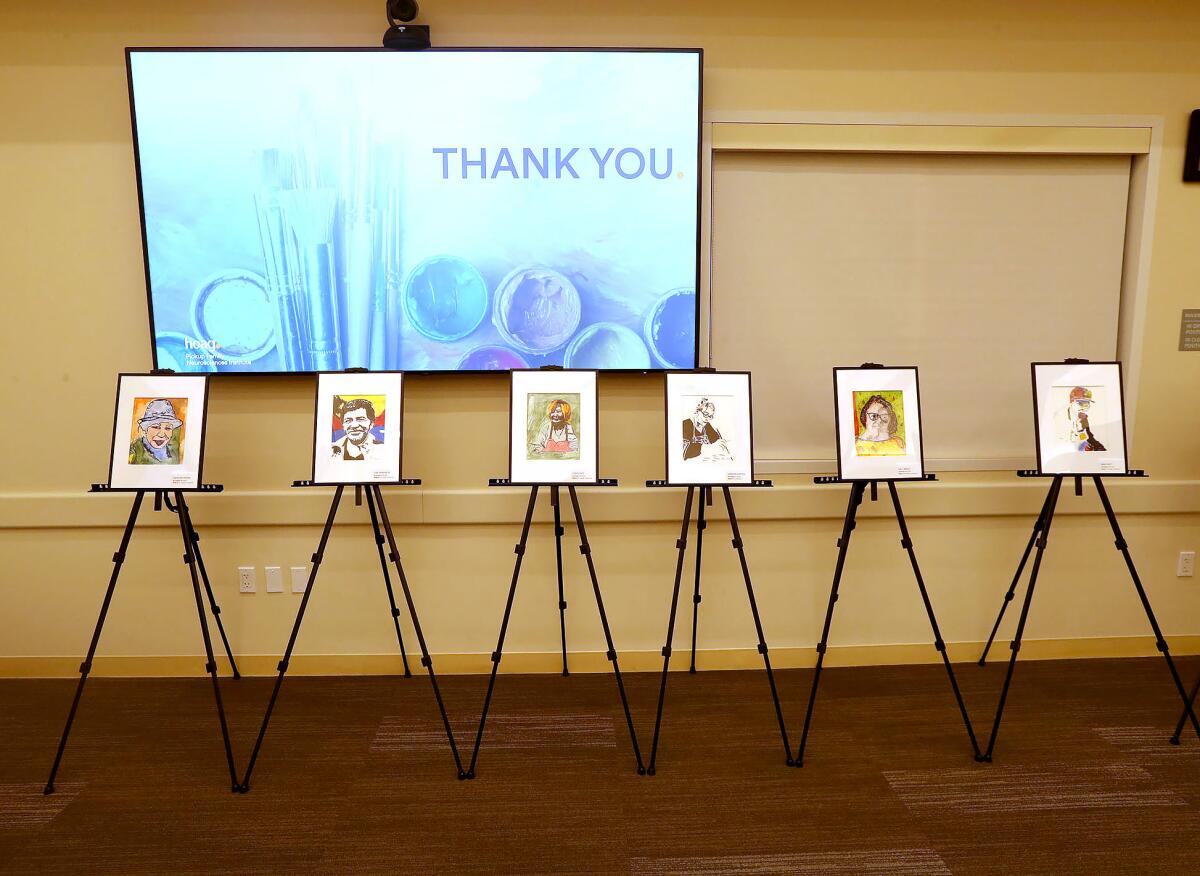
Shafer said she’d like to see a true gallery night for the program in the future, where the artists’ work could be auctioned off as a fundraiser.
“That’s the next step,” Shafer said. “We’re starting small, and building up.”
All the latest on Orange County from Orange County.
Get our free TimesOC newsletter.
You may occasionally receive promotional content from the Daily Pilot.




